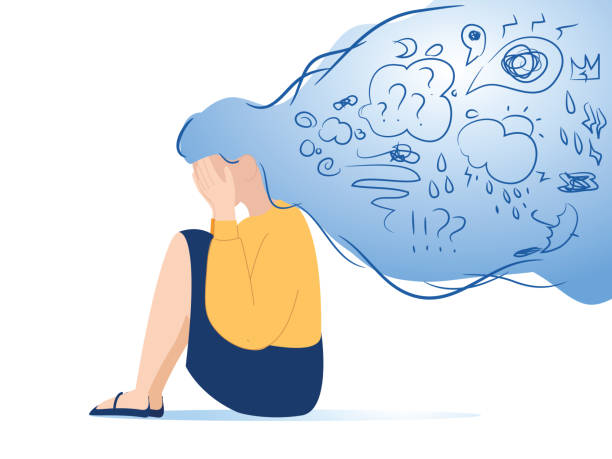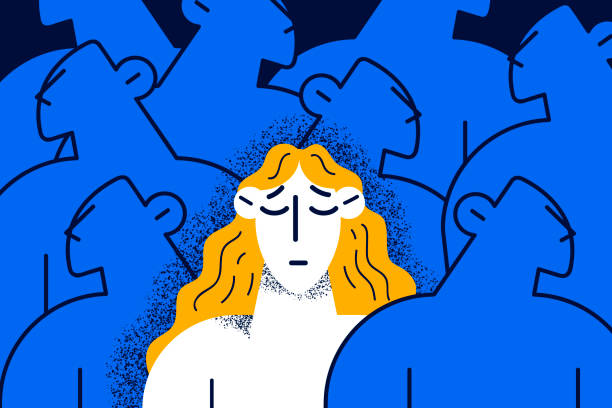What is
Anxiety?

Panic and Anxiety Disorder
Panic and anxiety disorders involve persistent feelings of excessive fear, worry, or apprehension that interfere with daily functioning. While anxiety is a normal response to stress, individuals with anxiety disorders experience these feelings to an intense degree, often without a clear cause. Panic disorders, specifically, are characterized by sudden and repeated episodes of overwhelming fear known as panic attacks. Effective treatments, coping mechanisms, and professional support can help individuals manage and recover from these conditions.
Types of Anxiety Disorders
- Generalized Anxiety Disorder (GAD): Chronic worry about everyday activities or events, even when no threat is present.
- Panic Disorder: Recurrent and unexpected panic attacks, coupled with fear of future episodes.
- Social Anxiety Disorder: Intense fear of social situations, often driven by fear of judgment or embarrassment.
- Specific Phobias: Extreme fear of particular objects or situations, such as heights, spiders, or flying.
- Separation Anxiety Disorder: Fear of being separated from loved ones, often more common in children but can affect adults.
Symptoms of Panic and Anxiety Disorders
1. Physical Symptoms:
- Increased heart rate or palpitations.
- Shortness of breath or chest pain.
- Sweating, trembling, or shaking.
- Nausea, dizziness, or faintness.
- Hot flashes or chills.
2. Emotional Symptoms:
- Intense fear or sense of impending doom.
- Feelings of detachment or unreality.
- Persistent worry or unease.
3. Behavioral Symptoms:
- Avoidance of feared situations or places.
- Difficulty concentrating or staying calm.
Causes and Risk Factors
1. Biological Factors:
- Genetics and family history of anxiety.
- Imbalances in brain chemistry (e.g., serotonin and dopamine).
2. Environmental Factors:
- Traumatic events or chronic stress.
- Childhood neglect or abuse.
3. Lifestyle and Personality:
- High-stress jobs or living situations.
- Personality traits like perfectionism or low self-esteem.

Treatment Options
1. Psychotherapy:
- Cognitive Behavioral Therapy (CBT): Helps identify and manage thought patterns contributing to anxiety.
- Exposure Therapy: Gradual desensitization to feared situations or objects.
2. Medication:
- Anti-anxiety medications (e.g., benzodiazepines).
- Antidepressants (e.g., SSRIs or SNRIs).
3. Lifestyle Changes:
- Regular exercise and balanced nutrition.
- Mindfulness practices, such as meditation or yoga.
- Adequate sleep and stress management.
4. Support Groups:
- Peer support to share experiences and coping strategies.
Coping Strategies
- Practice deep breathing exercises to calm physical symptoms.
- Challenge irrational thoughts with logical reasoning.
- Engage in relaxing activities such as listening to music, journaling, or spending time in nature.
- Limit caffeine and alcohol, which can exacerbate symptoms.
- Create a routine that includes self-care activities.
Helpful Links and References
Educational Resources
- Anxiety and Depression Association of America (ADAA): Extensive resources for understanding and managing anxiety.
- National Institute of Mental Health (NIMH): Research-based insights into anxiety disorders.
- Mayo Clinic: Comprehensive information about panic and anxiety disorders.
Support and Advocacy Groups
- Mind (UK): Offers practical advice and support for mental health issues, including anxiety.
- Anxiety UK: A charity focused on helping individuals with anxiety.
- South African Depression and Anxiety Group (SADAG): Local support for anxiety disorders.
Crisis Helplines
- SADAG Helpline (South Africa): Call 0800 70 80 90 or SMS 31393 for immediate assistance.
- National Helpline (US): Call 1-800-662-HELP (4357) for support.
- Lifeline (UK): Confidential support available 24/7.
Self-Help Tools and Apps
- Calm: Offers meditation and breathing exercises for anxiety relief.
- Headspace: Guided meditation to manage stress and anxiety.
- WorryTree: Tools to challenge and manage anxious thoughts.
Scientific Research and Articles
- PubMed Anxiety Research: Access peer-reviewed studies on anxiety disorders.
- Harvard Health Publishing: Articles exploring the science of anxiety and panic.
- NIH Anxiety Resources: Evidence-based strategies for treatment.
Books and Guides
- “The Anxiety and Phobia Workbook” by Edmund J. Bourne: Practical exercises and techniques to reduce anxiety. Buy on Amazon
- “Dare: The New Way to End Anxiety and Stop Panic Attacks” by Barry McDonagh: A revolutionary approach to overcoming anxiety. Buy on Amazon
- “When Panic Attacks” by David D. Burns: A guide to cognitive techniques for managing panic. Buy on Amazon

"“As long as you are breathing, there is more right with you than wrong with you, no matter what is wrong.” ― Jon Kabat-Zinn "